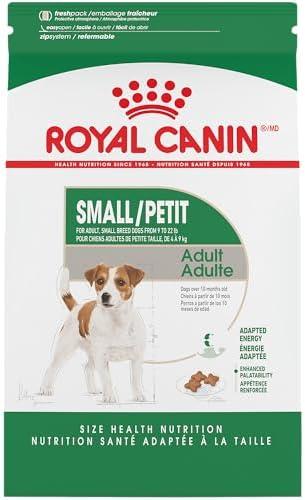Imagine a bustling household where Max, a lively golden retriever, eagerly awaits his meals. His owner, Sarah, has always fed him twice a day, believing it keeps his energy levels high. But one day, she learns that many experts recommend just one meal for adult dogs. Intrigued, she researches and discovers that a single meal can promote better digestion and weight management. As she transitions Max to one meal, she notices his energy remains vibrant, and his coat shines even brighter. Could less truly be more for our furry friends?
Contents
- Understanding the Nutritional Needs of Dogs for Optimal Health
- The Benefits of Feeding Dogs Twice a Day for Digestive Well-Being
- Evaluating Lifestyle Factors That Influence Meal Frequency in Dogs
- Expert Recommendations for Tailoring Meal Plans to Your Dogs Needs
- Q&A
Understanding the Nutritional Needs of Dogs for Optimal Health
When considering how many meals a day your dog should have, it’s essential to understand their unique nutritional needs. Dogs, like humans, require a balanced diet to thrive, which includes proteins, fats, carbohydrates, vitamins, and minerals. The frequency of meals can significantly influence their overall health, energy levels, and even behavior. By tailoring their feeding schedule to their specific needs, you can help ensure they receive the right nutrients at the right times.
Feeding your dog twice a day can offer several advantages. It allows for better digestion, as smaller, more frequent meals can be easier on their stomachs. This approach can help prevent issues such as bloating or gastric torsion, particularly in larger breeds. Additionally, spreading their caloric intake throughout the day can help maintain steady energy levels, reducing the likelihood of hyperactivity or lethargy between meals.
On the other hand, some pet owners prefer to feed their dogs once a day. This method can be convenient and may work well for dogs that are less active or have specific dietary restrictions. However, it’s crucial to ensure that the single meal is nutritionally complete and provides all the necessary nutrients. If you choose this option, monitoring your dog’s weight and overall health becomes even more critical to avoid potential deficiencies or overeating.
Ultimately, the decision between one or two meals a day should be based on your dog’s age, size, activity level, and any health concerns. Consulting with a veterinarian can provide personalized recommendations tailored to your dog’s specific needs. Remember, a well-balanced diet combined with the right feeding schedule is key to promoting optimal health and longevity for your furry friend.
The Benefits of Feeding Dogs Twice a Day for Digestive Well-Being
Feeding dogs twice a day can significantly enhance their digestive health, promoting a more stable and efficient digestive process. When meals are spaced out, it allows the dog’s digestive system to work optimally, reducing the risk of bloating and discomfort. This regularity helps maintain a balanced gut environment, which is essential for nutrient absorption and overall well-being.
Another advantage of a twice-daily feeding schedule is the regulation of blood sugar levels. By providing consistent meal times, dogs can experience fewer spikes and drops in their blood sugar, which is particularly beneficial for those prone to diabetes or obesity. This steady energy supply not only supports their physical activity but also contributes to a calmer demeanor, as they are less likely to experience hunger-induced anxiety.
Moreover, splitting meals into two portions can aid in weight management. Dogs that are fed smaller, more frequent meals are less likely to overeat, as they feel satisfied without the urge to binge. This approach can be especially helpful for dogs that struggle with weight issues, as it encourages a healthier metabolism and helps maintain an ideal body condition.
Lastly, feeding dogs twice a day can foster a stronger bond between pet and owner. Establishing a routine around meal times creates opportunities for interaction and training, reinforcing positive behaviors. This not only enhances the dog’s overall experience but also allows owners to monitor their pet’s eating habits closely, ensuring any changes in appetite or behavior are promptly addressed.
Evaluating Lifestyle Factors That Influence Meal Frequency in Dogs
When considering how many meals to feed your dog each day, it’s essential to evaluate various lifestyle factors that can significantly influence meal frequency. **Age** plays a crucial role; puppies typically require more frequent meals due to their rapid growth and high energy needs, while adult dogs may thrive on one or two meals a day. Additionally, **activity level** is a key consideration. Active dogs that engage in regular exercise may benefit from two meals to sustain their energy levels, whereas less active dogs might do well with just one meal.
Another important factor is **health status**. Dogs with specific medical conditions, such as diabetes, may require more frequent feeding to maintain stable blood sugar levels. Conversely, dogs prone to obesity might need controlled portions spread across fewer meals to manage their weight effectively. Consulting with a veterinarian can provide tailored advice based on your dog’s health needs, ensuring that their meal frequency aligns with their overall well-being.
**Lifestyle** also plays a significant role in determining meal frequency. For instance, if you have a busy schedule, feeding your dog once a day might be more practical. However, if you are home more often, you might find it easier to provide two meals, which can also help in preventing hunger-related behaviors, such as begging or scavenging. Additionally, consider your dog’s **social environment**; dogs that are more social may benefit from a routine that includes meal times as a bonding experience with their owners.
Lastly, **personal preference** should not be overlooked. Some dogs may simply prefer the routine of two meals a day, while others may adapt well to a single feeding. Observing your dog’s behavior and preferences can guide you in making the best decision. Ultimately, the key is to find a balance that supports your dog’s health, fits your lifestyle, and fosters a positive feeding experience.
Expert Recommendations for Tailoring Meal Plans to Your Dogs Needs
When considering how many meals to feed your dog each day, it’s essential to tailor their meal plan to their specific needs. Factors such as age, breed, activity level, and health status play a crucial role in determining the optimal feeding schedule. For instance, puppies typically require more frequent meals due to their rapid growth and high energy levels, while adult dogs may thrive on one or two meals a day, depending on their lifestyle.
**Consulting with a veterinarian** is a vital step in creating a personalized meal plan. They can provide insights based on your dog’s unique health profile and dietary requirements. For example, dogs with certain medical conditions may benefit from smaller, more frequent meals to help manage their symptoms. Additionally, a vet can recommend the best type of food—whether dry kibble, wet food, or a raw diet—that aligns with your dog’s nutritional needs.
Another important consideration is your dog’s **activity level**. Highly active breeds or working dogs may require more calories and, consequently, more meals to sustain their energy throughout the day. Conversely, less active dogs or those prone to obesity may do better with fewer meals to help regulate their weight. Monitoring your dog’s body condition and adjusting their meal frequency accordingly can lead to a healthier, happier pet.
Lastly, establishing a consistent feeding routine can greatly benefit your dog’s overall well-being. Dogs thrive on structure, and knowing when to expect their meals can reduce anxiety and promote better digestion. Whether you choose to feed your dog once or twice a day, ensure that the timing is consistent and that you’re providing the right portion sizes to meet their caloric needs. This approach not only supports their physical health but also strengthens the bond between you and your furry companion.
Q&A
-
How many meals should my dog eat each day?
Most adult dogs thrive on two meals a day, which helps maintain steady energy levels and prevents overeating. Puppies, however, typically require three to four meals daily due to their higher energy needs.
-
What are the benefits of feeding my dog twice a day?
Feeding your dog twice a day can aid in digestion, reduce the risk of bloat, and help manage weight. It also creates a routine that can be comforting for your pet, promoting better behavior and overall well-being.
-
Can I feed my dog just once a day?
While some dogs can adapt to a single meal, it may not be suitable for all. Feeding once a day can lead to hunger, digestive issues, and increased risk of bloat in certain breeds. Always consult your veterinarian to determine the best feeding schedule for your dog.
-
How do I decide what’s best for my dog?
Consider your dog’s age, size, activity level, and any health issues. Consulting with your veterinarian can provide personalized recommendations based on your dog’s specific needs, ensuring optimal health and happiness.
whether you choose to feed your dog one or two meals a day, the key is to prioritize their health and well-being. Consult with your veterinarian to determine the best feeding schedule tailored to your dog’s unique needs. Your furry friend deserves the best!

大家好,我是彼得潘,專業的手法身體治療師。我喜歡探索和研究各種主題,並透過與人工智慧的合作分享專業、實用、有趣的文章。我們定期進行人工審核,以確保內容的準確性。如果您發現文章中有任何不準確的地方,請隨時與我們聯繫,我們會及時糾正。您可以透過 [email protected] 與我們聯繫。



